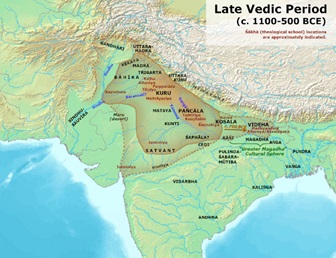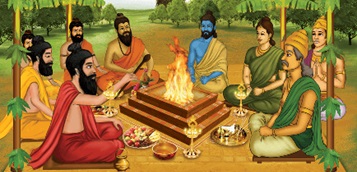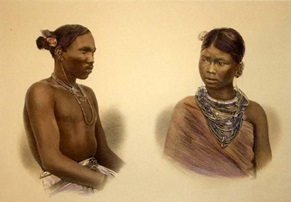
Archives
Contribute
| India: Pre-history And Indus Period – Geography And People |
Bijoy Misra
02/04/2021
India Vedic Period (2000BC to 700BC) – Geography and People Figure 1: The Lands of the Rig Veda Map showing extent of the Vedic geography in the Early Rig Vedic phase. Figure 2 Expansion of the Vedic culture and recorded habitation centers in late Vedic Period 1100BC to 500BC. (from Wikipedia, History of India) The non-Vedic people were prosperous and there are reports of conflicts between the groups as the Vedic tribes migrated eastward. As we find from the Ṛgveda (Reference 2), eventual settlements resulted through negotiations and social integration. Habitations developed at various river sites scattered in the country. The sites acted as trading centers with river traffic. A reconstructed habitation map of India by the Vedic tribes is given Figure 2. Figure 3. Graphic simulation of a Vedic ritual Among the non-Vedic tribes, the Mundas of the central and east India appear to have the most influence on the Vedic language. Linguistically, the Munda language is connected to south-east Asian Australoid population who likely moved to India through the coastal routes. (Reference 3) Figure 4. A Munda couple (reconstructed) 2000BCE (Wikipedia) The prosperity of the agricultural economy is attributed to the non-Vedic tribes. Figure 4 gives a sample reconstruction of a Munda couple around 2000BCE. Vedic culture gradually spread to South India, but major clashes are reported in literature. It appears that the period helped mature the Vedic belief system and tried to establish it throughout the country using integration and warfare. A Vedic school in modern India is featured in Figure 5. Figure 5. A view of a current Vedic school in South India. References: 1. Edwin Bryant, The Quest for the Origins on the Vedic Culture: The Indo-Aryan Migration Debate, 2004. 2. Ralph T. H Griffith, The Rig Veda, 1896. https://www.sacred-texts.com/hin/rigveda/index.htm 3. https://en.wikipedia.org/wiki/Munda_people 4. Will Durrant, Our Oriental Heritage: The Story of Civilization, Volume 1, 1935. Dr. Bijoy Misra leads the Science and Technology track in India Discovery Center's project on "Evolution of Indian Culture: Pre-history to 1947AD" More information and updates on the project are available at https://www.facebook.com/Evolution-of-Indian-Culture-An-IDC-Project-107749391111922 More information on India Discovery Center is available at https://www.indiadiscoverycenter.org (c) Copyright 2021 India Discovery Center, Inc. All rights reserved.


This structure in the Vedic society built itself with family as the nucleus and the father as the head of the family. Male members in the family assumed dominance. A wife and a mother had a major role in the rituals but did not possess any property of her own. The eldest son inherited the father’s property. In the absence of a son, adoptions were invoked. The daughters were gifted away in marriage. These practices were distinctly different in the non-Vedic tribes, many of which had the tradition of matriarchy. 
You may also access this article through our web-site http://www.lokvani.com/




